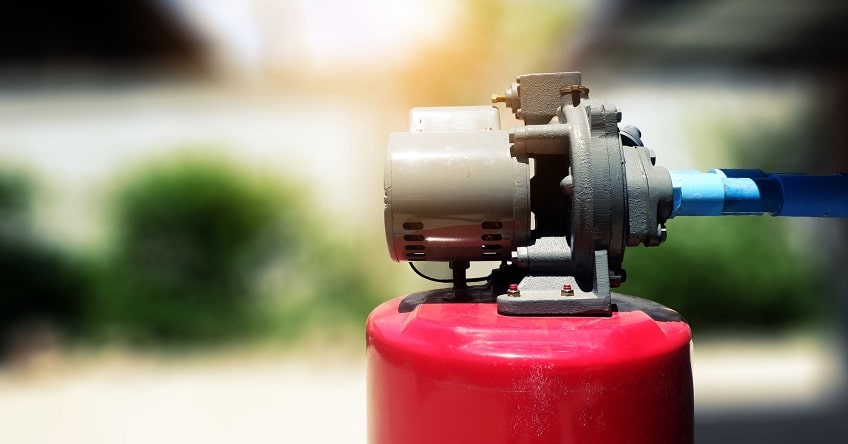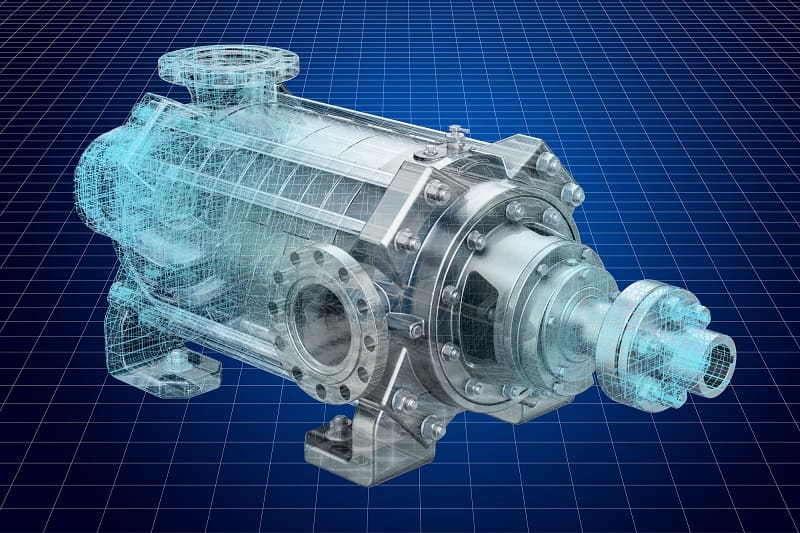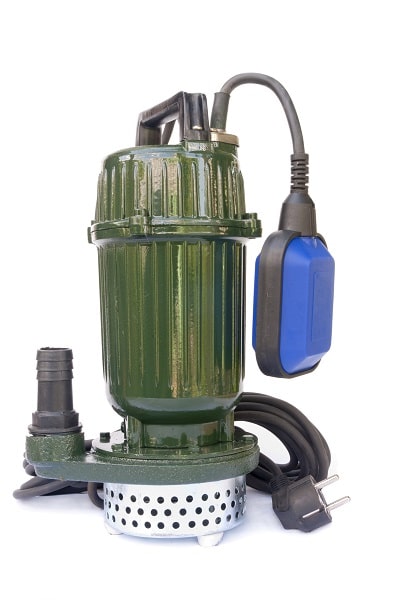Well pumps aren’t as complicated or as diverse as you might initially think, and the type and depth of your well will pretty much dictate which variety of well pump you need.
Shallow well pumps use suction to draw the water up and can operate effectively in wells with a depth of 25 to 30 feet.
However, in some deep wells, the water level can be as deep as 300 feet, making a jet or suction pump ineffectual.
Here, a submersible pump is the best option as this relies on a series of impellers that push the water up to the surface instead of using a vacuum to draw water up.
Essentially there are three different types of well pump – submersible, centrifugal, or jet.
Let’s jump in and discuss each option in-depth:
Types of Well Pump
#1 Jet Pumps

Jet pumps are most commonly found on residential wells where the water level is relatively shallow. As jet pumps are housed above the well, learning how to install a shallow well jet pump is a relatively simple process and one that can be completed without too many technical headaches.
Although all jet pumps use water to create a vacuum that then draws water into the foot valve and up to the top of the well, there are still different types for different types of well.
- Shallow well jet pump: the jet assembly is situated outside the well. This type of pump is known as a single-drop jet pump.
- Deep well jet pump: you’ll need to find a double-drop version in which the jet assembly is located within the well, enabling it to draw more water and, therefore, overcome the extra distance.
Some manufacturers advertise their jet pumps as convertible, suggesting that they can be adapted for either a shallow or deep well. According to those who’ve tried this approach, however, many of these struggle with water levels over 25 feet deep.
Priming a Jet Pump
Although many jet pumps are advertised as self-priming, most need to be primed before their first usage and after a power outage.
This isn’t as daunting a process as you might imagine; however, if you follow our handy guide on how to prime a well pump after a power outage, it should only take you a few minutes to complete.
#2 Centrifugal Pumps

Centrifugal pumps are the most common type of kinetic pump used extensively in agriculture, industry, and wastewater plants.
However, the one place you won’t find a centrifugal pump is on a deep well, as the rotational nature of the pump means it produces an ever-decreasing amount of water the lower it goes.
Most centrifugal pumps can achieve no more than a 25-foot suction lift, but they have other advantages. For one, centrifugal pumps are often quieter than jet pumps and require less maintenance.
#3 Submersible Pumps

While jet pumps may be the kings of the shallow well, submersible pumps are pretty much the only type capable of drawing water up deep wells. As the name suggests, these pumps are dropped down into the well itself.
Once installed, a submersible pump uses water to push water from the well to the surface. This requires pressure energy which it generates by converting rotary energy into kinetic energy.
A submersible pump is the only viable choice for deep wells or for accessing water at any level deeper than around 25 feet. Despite their technological sophistication, submersible pumps are surprisingly affordable and can last for up to 20 years without requiring any maintenance.
On the downside, installing a submersible pump is both physically demanding and rather technical. A couple of wrong moves could see you reducing your years of trouble-free pump service from 25 to just five!
If you want optimal performance from your pump, a submersible is the best way to go.
What To Look For In The Ideal Well Pump
Each of these popular types of pump can be powered by electricity, solar, fuel, or even manual operation. That means that, in addition to selecting the right type of pump, you also need to consider how you’re going to power the pump.
How you operate the pump can also vary, regardless of its type or function.
You can, for example, get electric and solar-powered pumps for both shallow and deep wells.
Similarly, you can install a hand pump for shallow and deep wells alongside your primary pump if you want an emergency backup. This secondary installation will guarantee you access to water, regardless of the electrical supply or weather conditions.
Some of the benefits of having a hand pump include:
- They are the easiest to operate
- You can build some muscle at the same time as pumping water
- They are easy to install if you follow this guide: how to install a hand pump on your well
- They provide a simple solution to the problem of how to pump water from a well without electricity.
There are other options, of course, like using wind power or a solar pump. Still, a hand pump is the most versatile as it relies only on your physical exertion and can therefore work effectively regardless of the weather conditions.
Read our guide to the best off grid water pumps
FAQ’s
What kind of pump is used most often on residential wells?
Each of the three different types of pump explored here has a part to play in the supply of water in residential areas.
While jet pumps are most common in areas where the water level is less than 25 feet underground, these are more often found in rural situations than residential wells.
Centrifugal pumps are the most common overall, thanks to their versatility and simplicity, while submersible pumps are more often found in residential wells due to their ability to access deeper water levels.
What is the difference between a shallow well pump and a deep well pump?
The most obvious difference between a shallow well pump and one designed for wells with a depth of 25 feet or more is that the shallow well pump can utilize suction to draw the water to the surface. Once the water level drops below 30 feet, however, suction is no longer effective, so deep well pumps push water down as well as pulling it up.
Conclusion
Any of the types of pump explored here offer a more effective approach to getting water from a well than the old bucket on a rope technique. As technological advancements continue, all pump types are becoming more efficient and cost-effective to run and maintain.
The type of pump you opt for will be largely dictated by the depth of the water you’re trying to access. If you have a shallow well, there are more options open to you than if you have a deep well, in which case, a submersible pump is your only truly viable option.
Also see our guide to three main types of well.


